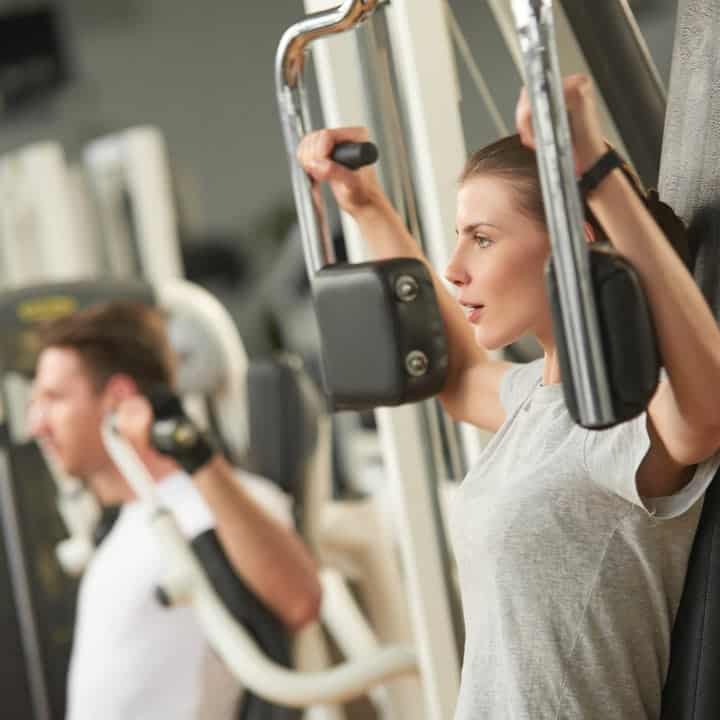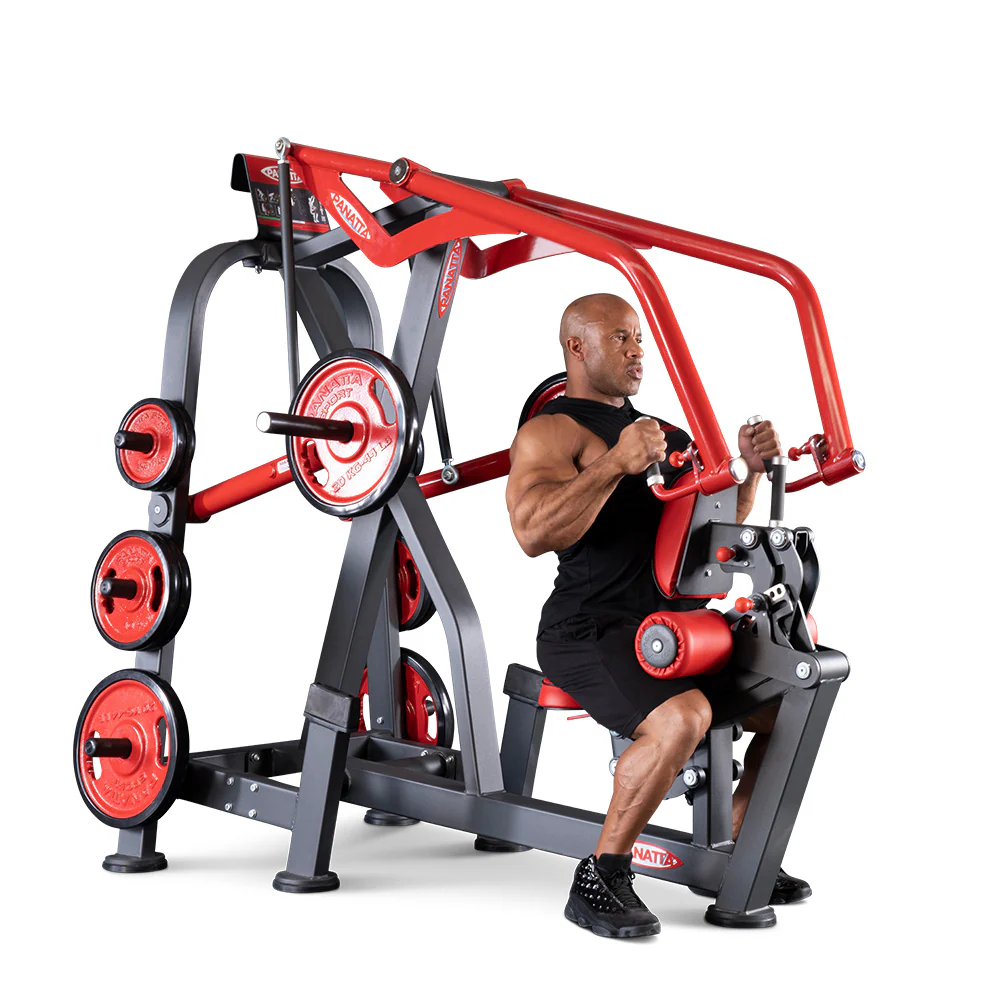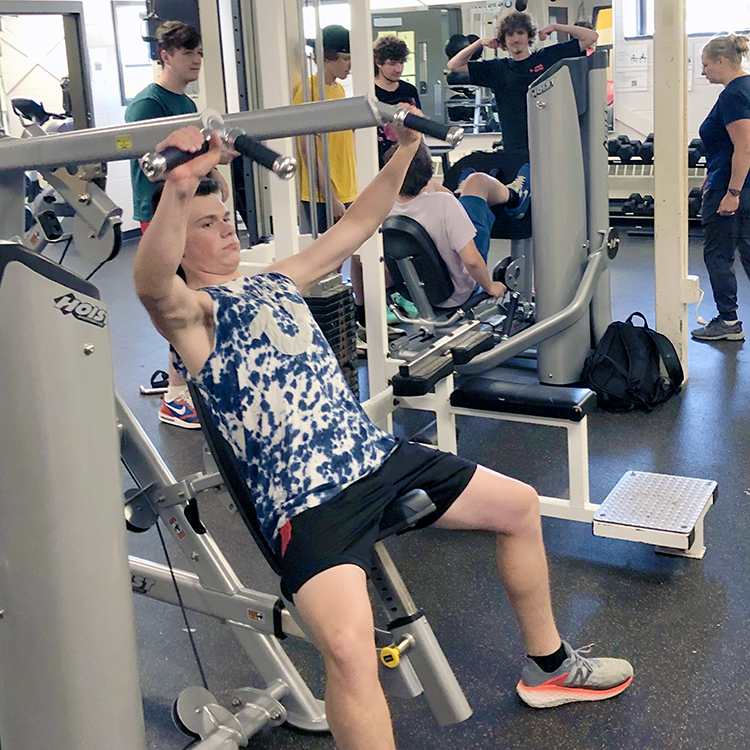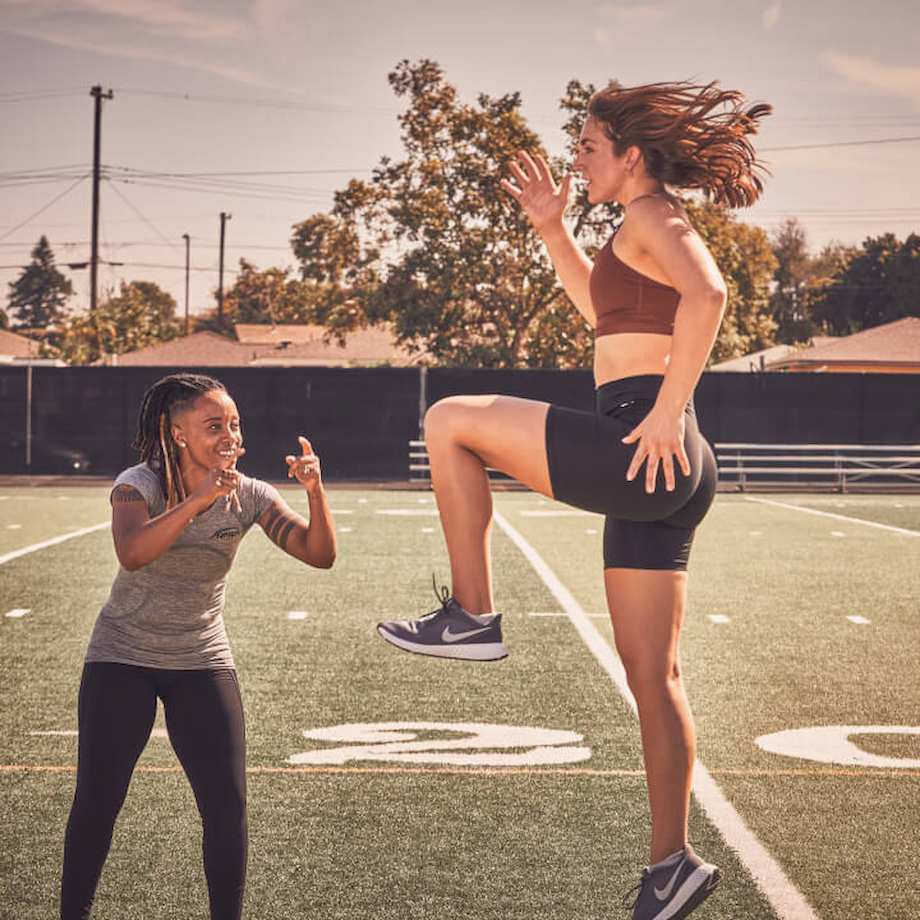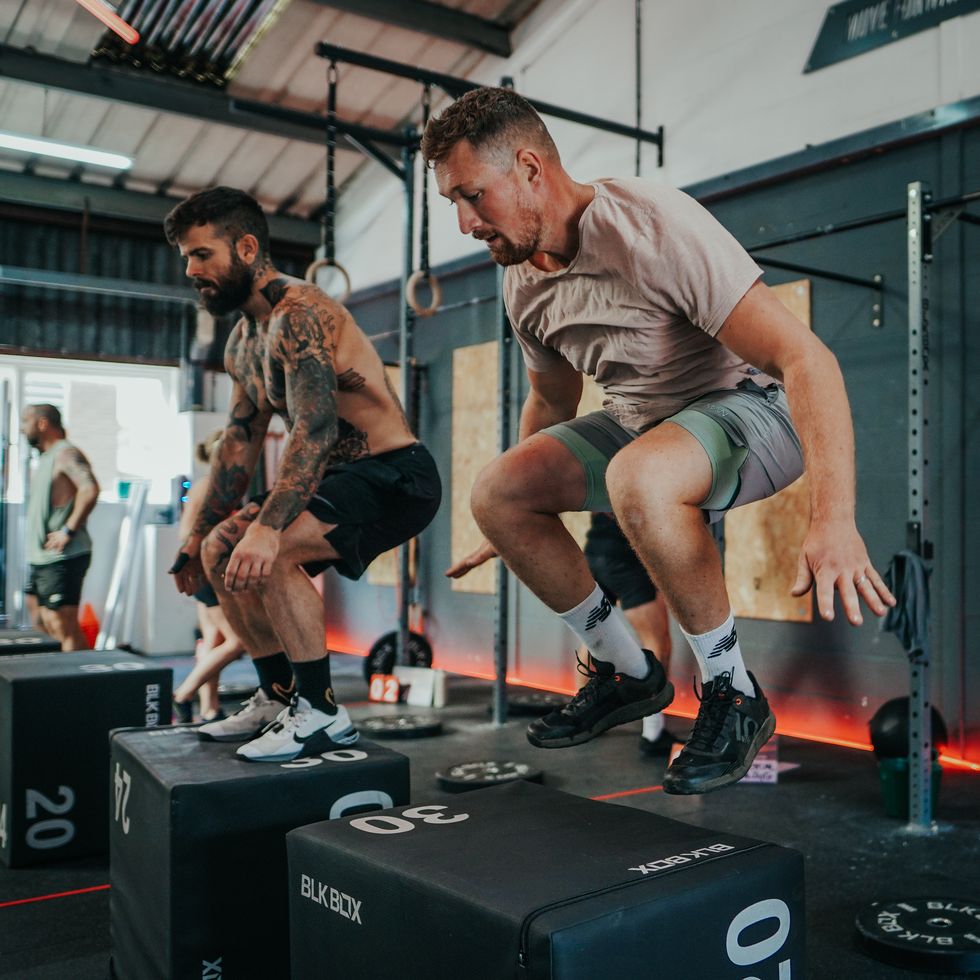 I. Introduction
I. Introduction
A. Significance of fitness in modern lifestyles
In today’s busy and sedentary lifestyles, fitness plays a crucial role in promoting overall health and wellbeing. Physical activity has been linked to numerous benefits such as weight management, disease prevention, increased energy levels, improved cognitive function, and better mental health. With the rise in chronic diseases and the growing emphasis on self-care, more individuals are recognizing the importance of incorporating fitness into their daily routines.
B. High Fitness as an emerging trend
Among the various fitness trends gaining popularity, High Fitness has emerged as an effective and engaging workout regimen. It combines high-intensity exercises, functional movements, and interval training to maximize cardiovascular fitness, strength, endurance, and fat burning. With its unique approach and ability to deliver quick and noticeable results, High Fitness has caught the attention of fitness enthusiasts worldwide.
II. Understanding High Fitness
A. Definition and concept of High Fitness
High Fitness is a comprehensive approach to fitness that focuses on pushing individuals to their maximum effort and capacity during workouts. It primarily involves high-intensity exercises, typically performed in a group setting, designed to challenge cardiovascular fitness, build strength, and enhance overall athleticism. The concept revolves around the idea of pushing one’s limits and continually striving for improvement.
B. Principles and components of High Fitness
High Fitness is guided by several principles that make it an effective and stimulating workout routine. These principles include:
- High-intensity interval training (HIIT): Incorporating short bursts of intense exercise alternated with periods of active recovery or rest. This method improves cardiovascular fitness, stimulates fat burning, and increases metabolic rate.
- Functional movements: Integrating exercises that mimic or enhance movements used in daily activities or sports. This approach improves muscular strength, stability, and overall body coordination.
- Variation and progression: Constantly challenging the body by incorporating different exercises and increasing the difficulty level over time. This principle ensures continuous adaptation and avoids plateaus in fitness progress.
C. Benefits of High Fitness
Engaging in High Fitness offers numerous benefits for individuals looking to improve their fitness levels. Some of the key benefits include:
- Enhanced cardiovascular fitness: High-intensity exercises and interval training improve heart health, lung capacity, and overall cardiovascular endurance.
- Increased muscular strength and endurance: High Fitness includes resistance exercises that target various muscle groups, resulting in improved strength, endurance, and muscle tone.
- Fat burning and weight loss: The combination of high-intensity intervals and functional movements stimulates metabolism, leading to increased calorie burn and fat loss.
III. High Fitness Workout Techniques
A. Interval Training: The core of High Fitness
Interval training is a fundamental component of High Fitness workouts. It involves alternating periods of intense exercise with periods of active recovery or rest. This method challenges the cardiovascular system, increases endurance, and boosts calorie burn.
During a High Fitness interval training session, individuals push themselves to their maximum effort during the intense exercise phase. This can be achieved through exercises such as sprints, burpees, mountain climbers, or high-knee jumps. The key is to maintain a high level of intensity to elevate heart rate and challenge the body.
Following the intense exercise phase, active recovery is introduced to allow the heart rate to come down before the next interval. This can be achieved through light jogging, walking, or gentle stretching. The repeated cycles of intense exercise and active recovery create a powerful metabolic and cardiovascular stimulus, leading to improved fitness and fat burning.
B. Incorporating High-Intensity Interval Training (HIIT)
High-Intensity Interval Training (HIIT) is a popular form of interval training used in High Fitness workouts. It involves short bursts of all-out effort, followed by brief recovery periods. This method is highly effective in improving cardiovascular fitness, increasing metabolic rate, and promoting fat loss.
Incorporating HIIT into High Fitness workouts can be achieved by selecting exercises that engage multiple muscle groups and elevate heart rate quickly. Examples include squat jumps, box jumps, jump lunges, or kettlebell swings. The duration of the intense exercise phase can range from 20 to 60 seconds, followed by a recovery period of 10 to 30 seconds. This format can be repeated for a set number of rounds or combined with other exercises for a full-body workout.
C. Plyometrics: Maximizing power and agility
Plyometric exercises are explosive movements that focus on developing power, speed, and agility. They involve rapid contractions of muscles, followed by quick stretching and rebounding actions. Plyometrics are commonly included in High Fitness to enhance athletic performance and boost overall fitness levels.
Examples of plyometric exercises include box jumps, tuck jumps, lateral bounds, or medicine ball slams. These exercises require a combination of strength, coordination, and explosive power. When performed with proper form and technique, plyometrics can improve muscle force production, increase speed and power output, and improve vertical jump height.
IV. Nutrition and High Fitness
A. Importance of a balanced diet
Proper nutrition is a critical aspect of achieving optimal results in High Fitness. A balanced diet provides the necessary fuel, nutrients, and energy to support high-intensity workouts, enhance muscle recovery, and promote overall health.
A balanced diet should include a variety of whole, nutrient-dense foods. This includes lean proteins (such as chicken, fish, tofu, or beans), healthy carbohydrates (such as vegetables, fruits, whole grains), and healthy fats (such as avocado, nuts, olive oil). It is important to focus on whole foods and limit processed foods, sugary beverages, and excess salt and sugar.
B. Proper fueling for high-intensity workouts
Eating properly before a high-intensity workout is crucial for providing the body with adequate energy and preventing fatigue. It is recommended to consume a balanced meal or snack containing carbohydrates, proteins, and fats about 2 to 3 hours before the workout. This allows for proper digestion and utilization of nutrients.
Ideal pre-workout food choices include a combination of complex carbohydrates, such as whole grains or fruits, to provide sustained energy. Including a source of lean protein, such as Greek yogurt or lean turkey, helps to support muscle repair and recovery. Adding a small amount of healthy fats, such as nut butter or avocado, aids in satiety and slows down digestion.
For individuals who prefer to exercise in the morning or cannot consume a full meal beforehand, a small snack rich in easily digestible carbohydrates and a small amount of protein can be consumed about 30 to 60 minutes before the workout. Examples include a banana with a tablespoon of almond butter or a small smoothie with fruit and a protein powder.
C. Recommended macronutrient distribution for High Fitness
To optimize High Fitness performance and results, it is essential to ensure the proper distribution of macronutrients (carbohydrates, proteins, and fats) throughout the day.
Carbohydrates: Carbohydrates are the primary fuel source for high-intensity exercises. It is recommended to consume a moderate amount of carbohydrates to support energy levels and performance. Opt for complex carbohydrates, such as whole grains, fruits, and vegetables, which provide sustained energy and essential nutrients.
Proteins: Protein is crucial for muscle repair, growth, and recovery. Include lean sources of protein, such as chicken, fish, eggs, tofu, or beans, with each meal and snack. Aim for a moderate intake of protein to support muscle development and prevent muscle breakdown.
Fats: Healthy fats are important for overall health and hormone production. Include sources of unsaturated fats, such as avocados, nuts, seeds, and olive oil, in moderation. They provide satiety, aid in nutrient absorption, and contribute to overall heart health.
V. Mental and Emotional aspects of High Fitness
A. Motivation and goal-setting
Motivation and goal-setting play a crucial role in achieving success in High Fitness. Setting clear, specific, and realistic goals helps to provide direction and motivation for individuals during their fitness journey. Whether the goals are related to weight loss, strength gains, or overall fitness improvement, they act as a driving force to stay committed and focused.
To effectively set goals in High Fitness, it is important to follow the SMART goal-setting framework. SMART stands for Specific, Measurable, Achievable, Relevant, and Time-bound. This means setting goals that are well-defined, trackable, within reach, aligned with individual values, and have a specific deadline.
Additionally, finding intrinsic motivation, such as improving overall health, increasing energy, or boosting self-confidence, can provide a sustainable source of drive and commitment. External motivators, such as personal trainers, workout partners, or rewards, can also be helpful in maintaining motivation levels.
B. Overcoming mental barriers
High Fitness often presents mental barriers that can hinder progress and prevent individuals from reaching their full potential. Overcoming these mental barriers is essential for long-term success.
Some common mental barriers in High Fitness include self-doubt, fear of failure, lack of confidence, and negative self-talk. These barriers can sabotage progress and limit individuals from pushing themselves during workouts.
To overcome these mental barriers, it is important to practice positive self-talk and believe in one’s abilities. Reframing negative thoughts into positive affirmations can boost confidence and help individuals overcome challenges. Visualization techniques, focusing on past successes, and seeking support from a coach or workout partner can also be effective strategies in conquering mental barriers.
VI. Advanced High Fitness Strategies
A. Cross-training for overall fitness
Cross-training is a valuable strategy to enhance overall fitness, prevent boredom, and reduce the risk of overuse injuries in High Fitness. It involves incorporating a variety of exercises and activities into the workout routine to target different muscle groups, improve overall strength, and provide a well-rounded fitness experience.
Including activities such as swimming, cycling, hiking, or yoga alongside High Fitness workouts can strengthen different muscle groups, improve cardiovascular fitness, and prevent burnout. Cross-training also promotes flexibility, encourages mental engagement, and offers a wide range of physical benefits.
B. Implementing variations and progressions
To prevent plateaus and keep workouts challenging, implementing variations and progressions is crucial in High Fitness. As the body adapts to exercises, incorporating new movements, increasing intensity, or changing variables such as duration, sets, or repetitions can enhance results and prevent monotony.
Variations can include modifying exercise techniques, introducing new equipment, or experimenting with different workout formats. Progressions involve gradually increasing the difficulty level of exercises or incorporating advanced movements.
It is important to listen to the body, pay attention to proper form and technique, and progress at a pace that is appropriate for individual fitness levels. Consulting with a fitness professional or coach can provide guidance on safe and effective variations and progressions.
By implementing advanced strategies such as cross-training, variations, progressions, and monitoring fitness progress, individuals can continually challenge their bodies, avoid plateaus, and optimize their High Fitness results.
